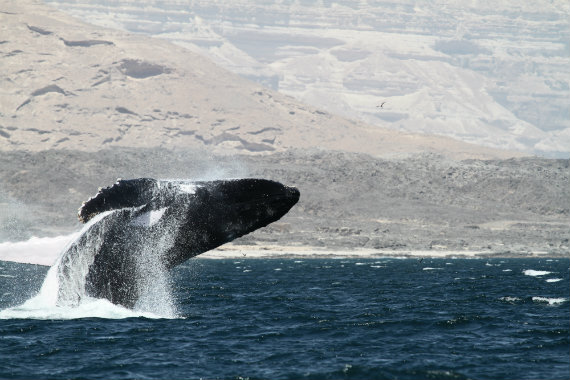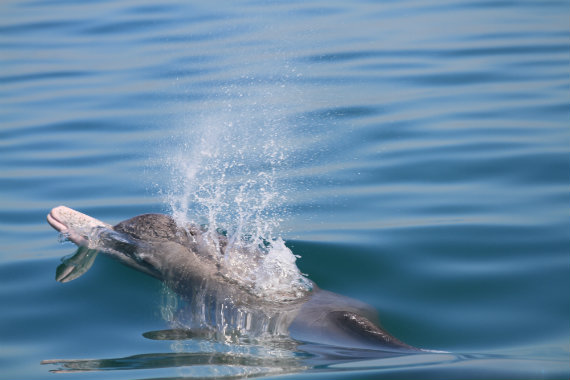IUCN Task Force identify a record number of candidate Important Marine Mammal Areas
The IUCN Marine Mammal Protected Areas Task Force identified 55 marine areas in the western Indian Ocean and Arabian Seas important for the conservation of marine mammal species, during the fifth Important Marine Mammal Area workshop in Oman.
The 55 candidate important marine mammal areas (IMMAs) —discrete portions of habitat that have the potential to be managed for conservation— in the western Indian Ocean and Arabian Seas, contain many species of marine mammal, several of which are endemic to the region. Species threatened with extinction include the Critically Endangered Antarctic Blue Whale (Balaenoptera musculus ssp. intermedia), the Endangered Indian Ocean Humpback Dolphin (Sousa plumbea) and the Vulnerable Dugong (Dugong dugon).
“The identification of 55 candidate IMMAs and a subsequent 14 areas of interest (AoI) is a record total to date for a single region,” says Giuseppe Notarbartolo di Sciara, Co-Chair of IUCN Marine Mammal Protected Areas Task Force. “IMMAs are not marine protected areas, but layers that can be used in spatial planning or for other area-based management tools. Many of them are crucial to species conservation, literally putting habitats requiring conservation on the map.”
Information about IMMAs can be found on a publicly available e-atlas designed to help governments, intergovernmental organisations, conservation groups, and the general public monitor and protect these important habitats.
The conservation of IMMAs in the western Indian Ocean and Arabian Seas area is particularly important for the protection of the rarest humpback whale in the world —the Arabian Sea humpback whale (Megaptera novaeangliae sp.), and the largest population of Omura’s whale; a cryptic 10m long tropical whale only recently identified as a species by scientists. Attendees to the workshop from the Oman Ministry for Fisheries and Environment now plan to inform wider government about the importance of IMMAs, with the hope of protecting these threatened species.
“As a Task Force we have seen how the identification of IMMAs has helped governments plan their marine protection schemes,” says Erich Hoyt Co-Chair of IUCN Marine Mammal Protected Areas Task Force. “Two IMMAs approved in Vietnam and one in the southern Andaman Islands of India are providing leverage to stakeholders to pursue protection strategies for marine mammals and their habitats in these countries. At the forthcoming IWC-IUCN TASK FORCE- ACCOBAMS* Workshop in Greece, IMMAs in the Mediterranean and other regions will be used to help determine areas where large whales are vulnerable to being hit by ships.”
The Task Force expect over 70% of the candidate IMMAs to pass review and results from the panel are expected to be posted online later in 2019. More information on the Task Force and IMMAs can be found online or by contacting Erich Hoyt or Giuseppe Notarbartolo di Sciara.
Note:
The workshop was sponsored by the Global Ocean Biodiversity Initiative through the German Government’s International Climate Initiative (GOBI-IKI), the Task Force has adopted as its mandate the mapping of habitats for the 130 species of marine mammals —cetaceans, pinnipeds, sirenians, otters and the polar bear— across the world ocean.
*IWC-IUCN TASK FORCE-ACCOBAMS definition:
IWC —International Whaling Commission; ACCOBAMS – Agreement for the Conservation of Cetaceans of the Black Sea, Mediterranean Sea and Contiguous Atlantic Area


